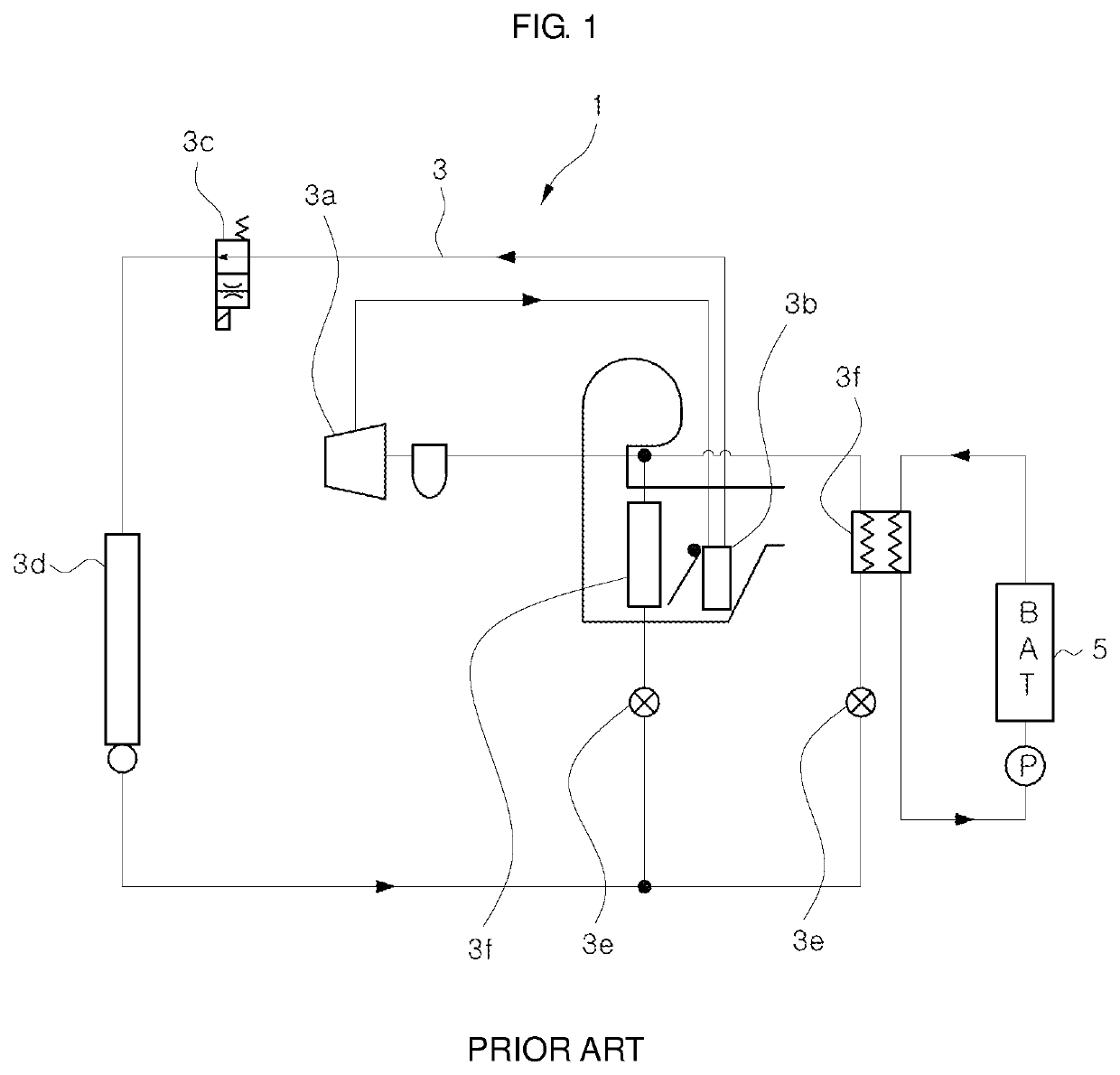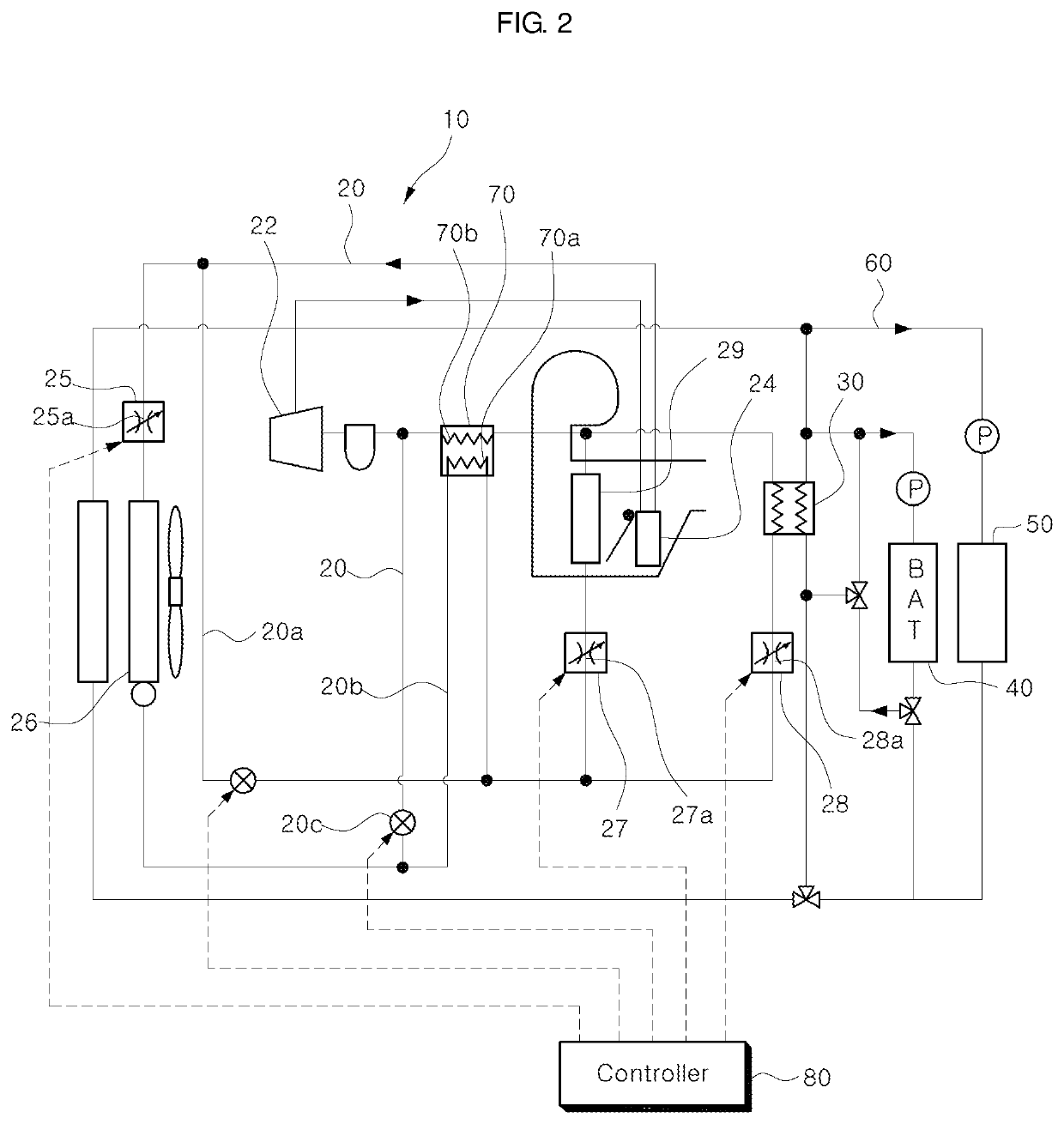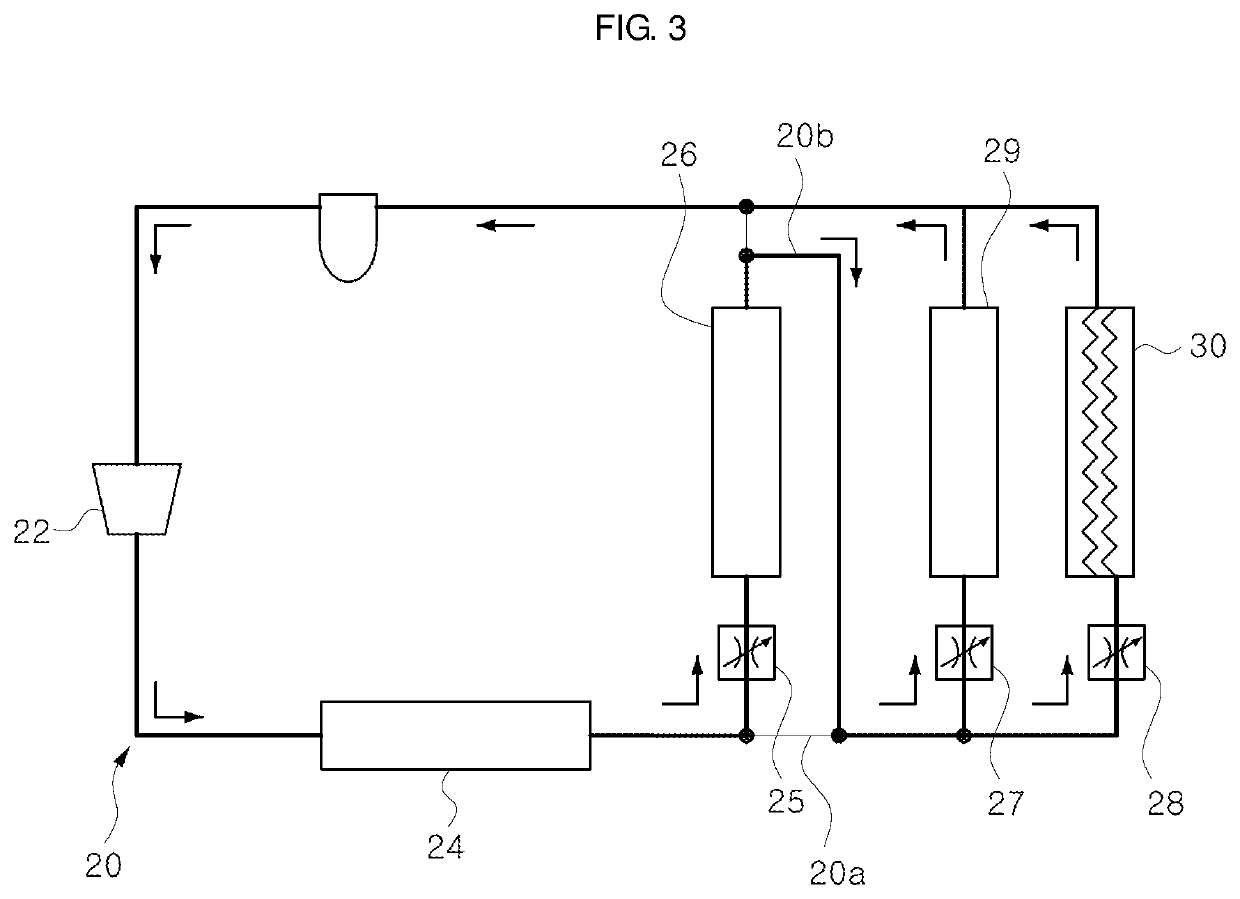Vehicular heat management system
a heat management system and heat exchanger technology, applied in the direction of battery/fuel cell control arrangement, lighting and heating apparatus, transportation and packaging, etc., can solve the problems of significant reduction of the cooling performance of the low-pressure side heat exchanger b>3/b>i>f /i>, increase of refrigerant pressure loss, etc., to achieve optimal cooling performance and improve cooling/heating performance.
- Summary
- Abstract
- Description
- Claims
- Application Information
AI Technical Summary
Benefits of technology
Problems solved by technology
Method used
Image
Examples
first embodiment
[0040]Prior to describing the features of the vehicular heat management system according to the present invention, the general configurations of the vehicular heat management system will be briefly described with reference to FIG. 2.
[0041]The vehicular heat management system includes an air conditioner 10 for cooling and heating air conditioning regions of a vehicle. The air conditioner 10 is of a heat pump type and includes a refrigerant circulation line 20.
[0042]The refrigerant circulation line 20 includes a compressor 22, a high-pressure side heat exchanger 24, a heat pump mode expansion valve 25, an outdoor heat exchanger 26, a plurality of air conditioning mode expansion valves 27 and 28, and low-pressure side heat exchangers 29 and 30 (hereinafter referred to as “first low-pressure side heat exchanger 29” and “second low-pressure side heat exchanger 30”) installed on the downstream side of the air conditioning mode expansion valves 27 and 28, respectively.
[0043]The refrigerant...
second embodiment
[0100]FIG. 12 is a diagram showing a vehicular heat management system according to a second embodiment of the present invention. The vehicular heat management system according to the second embodiment has the same main configuration as that of the vehicular heat management system according to the first embodiment.
[0101]As in the first embodiment, depending on the mode state of the air conditioner 10, the outdoor heat exchanger 26 and the first and second low-pressure side heat exchangers 29 and 30 are connected in series or in parallel, whereby the outdoor heat exchanger 26 and the first and second low-pressure side heat exchangers 29 and 30 are operated in association with each other or independently of each other.
[0102]However, in the vehicular heat management system according to the second embodiment, the controller 80 variably controls the opening degrees of the variable expansion valves 25, 27 and 28 depending on the cooling / heating load and the overheating degree.
[0103]Specifi...
third embodiment
[0105]A vehicular heat management system according to a third embodiment of the present invention and an operation example thereof are shown in FIGS. 13 to 16.
[0106]Referring first to FIG. 13, the vehicular heat management system according to the third embodiment has the same main configuration as that of the vehicular heat management system according to the first embodiment.
[0107]As in the first embodiment, depending on the mode state of the air conditioner 10, the outdoor heat exchanger 26 and the first and second low-pressure side heat exchangers 29 and 30 are connected in series or in parallel, whereby the outdoor heat exchanger 26 and the first and second low-pressure side heat exchangers 29 and 30 are operated in association with each other or independently of each other.
[0108]However, in the vehicular heat management system according to the third embodiment, the heat generated in the high-pressure side heat exchanger 24 of the air conditioner 10 is transferred in a water-cool...
PUM
 Login to View More
Login to View More Abstract
Description
Claims
Application Information
 Login to View More
Login to View More - R&D
- Intellectual Property
- Life Sciences
- Materials
- Tech Scout
- Unparalleled Data Quality
- Higher Quality Content
- 60% Fewer Hallucinations
Browse by: Latest US Patents, China's latest patents, Technical Efficacy Thesaurus, Application Domain, Technology Topic, Popular Technical Reports.
© 2025 PatSnap. All rights reserved.Legal|Privacy policy|Modern Slavery Act Transparency Statement|Sitemap|About US| Contact US: help@patsnap.com



